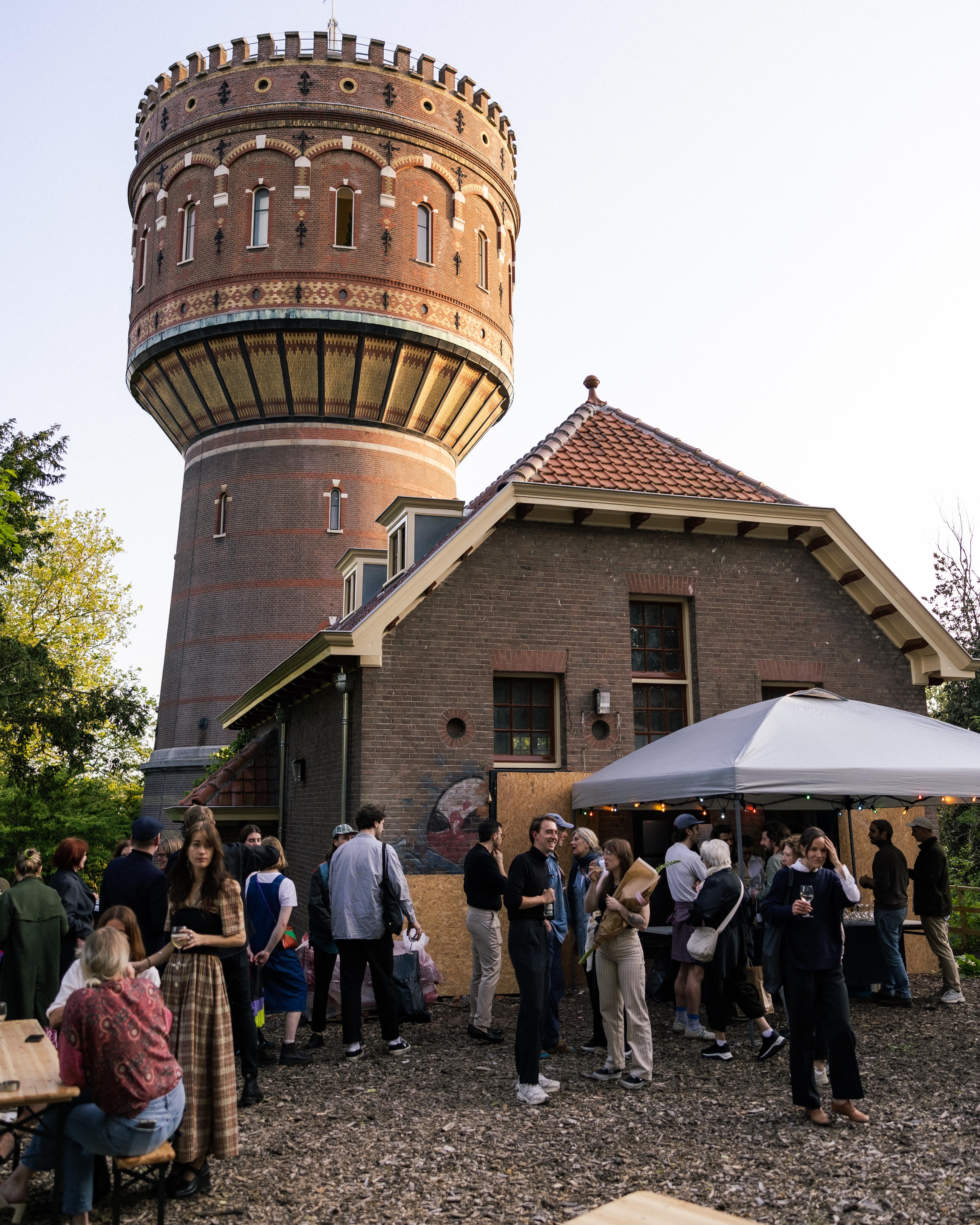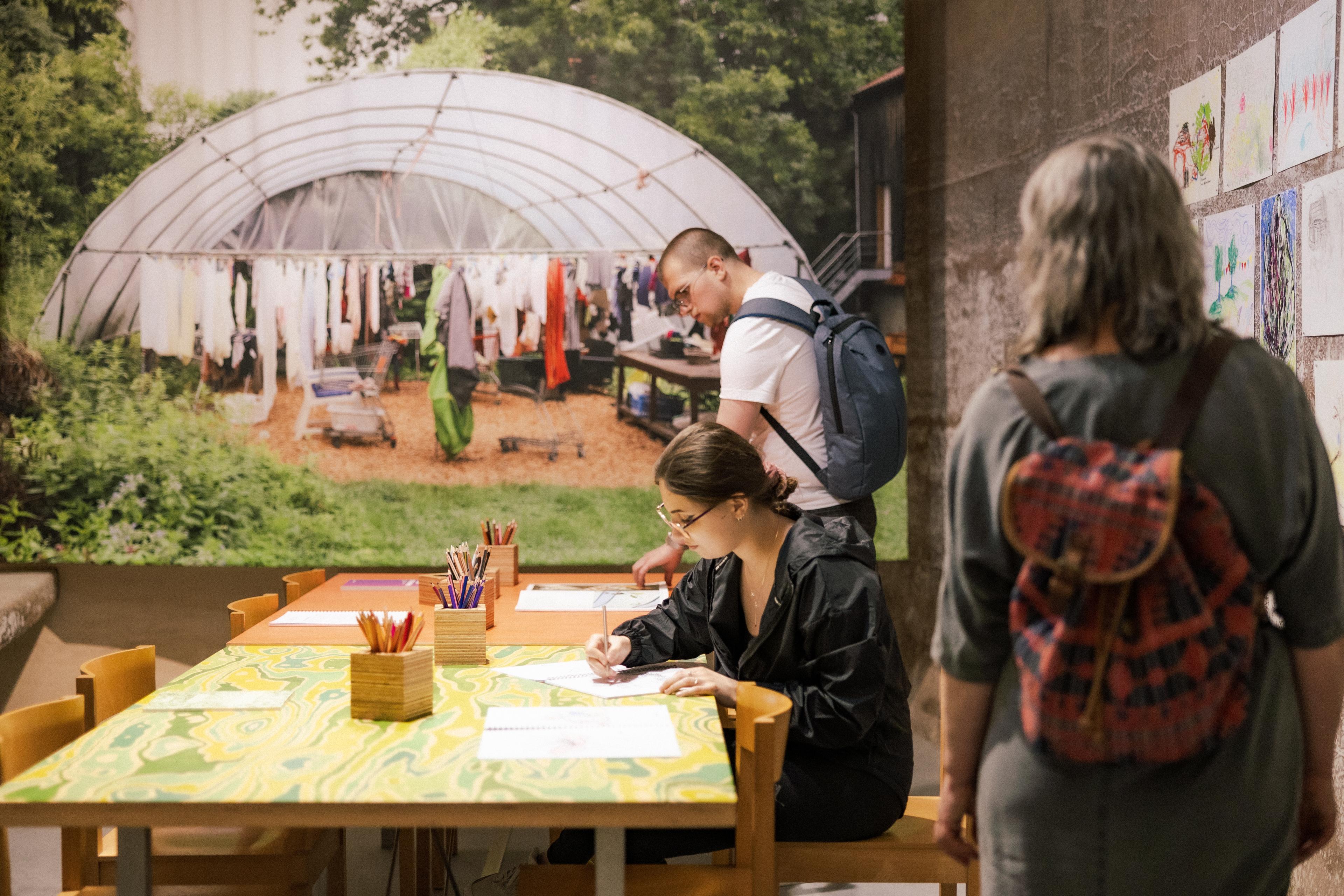DelftNL
A city known for the historical paintings of Johannes Vermeer and a Technical University that attracts students from around the world. RADIUS - a new center for contemporary art and ecology - opened in January 2022 and is located just outside the inner-city of Delft. In spring and summer of 2023 we set a table in RADIUS show and co-organized public program of events on Dutch horticulture.
RADIUS is located in the pump house and water basin belonging to the Delft water tower, a historic national monument and landmark. Designed at the end of the 19th century by architect M.A.C. Hartman and build north of the Haagpoort, the place that would later be called Kalverbos. A suitable location, because this former earthen stronghold is higher than the surrounding area and close to the city centre. The tower is accompanied by a huge underground reservoir to store the Dune-water and (later on) the Maas-water to provide the Delft-households from the 600 tons of water that the reservoir could storage.
In 1996 the water tower loses its function. In the tower various spaces have been built that can accommodate flex workers and small-scale seminars.
In the reservoir RADIUS runs an exhibition and education program dedicated to the intersection of art and science, with an emphasis on climate, ecology and the living environment.
| Region | South Holland |
|---|---|
| Local partners |
|
| Population | 101,030 |
| Common fruit, vegetables, animals | Tomatoes in greenhouses, sparrows and herons |
| Tradition | Solar Powered Cars |
| Scent | Yeast factory |
| Distances from Delft | Distances |
AT THE TABLE WITH: CLEMENS DRIESSEN
This talk was part of a series of presentations that took place at Radius developed in collaboration with Wapke Feenstra, Rural School of Economics. And took place on Sunday, August 20 - the last day of exhibition NATURECULTURES Chapter 2: THE GLASS CITY.
Niekolaas Johannes Lekkerkerk introduced presentation by Clemens Driessen, author, philosopher and assistant professor at Wageningen University. Driessen analyzes the development of the Westland on the basis of the mathematical-mechanical principle of the originally French philosopher René Descartes, who lived in The Netherlands for some time and can be seen as a forerunner of the Enlightenment.
It was followed with a program curated by RADIUS team: a visual presentation by artist Joris van den Einden on the Westland and greenhouse culture and a panel discussion on regenerative farming and the future of agribusiness, with David van den Berg (Stichting Kapitaloceen), Frank van der Helm (Hogeschool Inholland), Slow Food Youth Network, and Müge Yilmaz (Four Sisters).
Touring The Glass City took place on July 20th. It was a tour organized by RSoE in collaboration with Radius and Rijk Zwaan as part of the exhibition THE GLASS CITY. We drove through Westland - a region in the west of the Netherlands - the world’s largest continuous area of glasshouses covering more than 2,300 hectares. Our stops: Rijk Zwaan facilities - a vegetable breeding company that develops new vegetable varieties and is one of the largest seed producers of the world; Tomato World - an information and education centre on Dutch greenhouse horticulture; Koppert - a company dedicating itself to developing sustainable alternatives for pesticides.
Wapke Feenstra and Rijk Zwaan collaboration goes back to 2011. When Myvillages was invited in 2010 to realise an art project around the food for the guests of the Über Lebenskunst festival in Berlin. From June 2010 to August 2011 Myvillages worked on a Vorratskammer (a larder).
For this audience of mostly artists from Delft and Rotterdam, Rijk Zwaan gave a short introduction to the company, the process and logistics of working on new vegetable breeds and strategies of how to introduce them to customers. The presentation was followed by a tour through some of the Rijk Zwaan facilities, giving us some insight into seed distribution. 1 kg of seeds cost more than 1 kg of gold.
Next - Tomato world - an information and education centre on Dutch greenhouse horticulture. We learn that each tomato plant in greenhouse conditions in the Netherlands grows from February to November, and reached total of 15 m length.
The last stop - Koppert - a company dedicating itself to developing sustainable alternatives for pesticides.
Special thanks to Silke Remmits from Rijk Zwaan, Francien van Epen from Koppert and RADIUS team.
On the 27th is the opening of show and program NATURECULTURES Chapter 2: THE GLASS CITY at the Center for Contemporary Art and Ecology - Radius, Delft (NL).
For THE GLASS CITY, Rural School of Economics offers a temporary working space for the understanding of the rural beyond the binary with the urban. Instead, the rural is invoked as a place, a mindset, a memory, an amalgam of trans-local territories. In this exhibition, Rural School of Economics presents their research, methodologies, and network to think about the Dutch profit landscape, exemplified in the agricultural complex of the Westland, and the localised cultural, financial, and political intertwining between the urban and the rural in the Netherlands. As a communal space for sharing knowledge, visitors are welcome to engage with the material on the table, as well as to attend the parallel public programme.
2 Already announced events organised by RSoE together with RADIUS:
- 20 July; 10:00–18:00; TOURING THE GLASS CITY
- 20 August; 14:00–16:00; AT THE TABLE WITH: CLEMENS DRIESSEN

